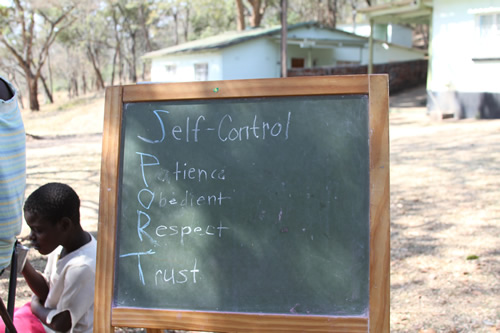I survive on stone sculpting
Tuesday, July 17th, 2012 by Lenard KamwendoInterview with Leofold Ndemera (Stone Sculptor) at the Chitungwiza Art Centre.
How did you get started as a stone sculptor?
I started stone sculpting some years ago when I dropped out of school after I faced challenges in paying school fees. So I moved to Chitungwiza where I lived with my uncle who was into stone sculpting at that time. I started by helping him in the workshop to do finishing touches on his pieces and later he taught me how to carve. It didn’t take me a long time to learn stone carving skills because I was passionate and I’m a fast learner.
Who has inspired you?
After both my parents died my grandfather raised me. So through the hardships I faced growing up I can say I inspired myself to be what I am today. I wanted to make a difference in my life so that my family will not live the same manner I was raised.
How would you describe your work environment?
Chitungwiza Art Center is a place, which was donated to artists by The National Arts Council in conjunction with United Nations Development Program. Artists here operate independently in terms of their sculpting techniques and their equipment, but pay a percentage of their turnover to the cooperative, which covers rent and other incidentals. Buyers of various types of art frequent the place making it a viable marketing place for art
What is the biggest challenge you have faced in your business?
In my line of trade I think the biggest challenge I faced so far is marketing my artwork. Customers are not coming in the manner they used to and when they do come they are not paying prices which make my business sustainable.
How do you market you work?
I use the Internet … Facebook to be precise, and I also use volunteering activities to publicize my work.
Do you have other means of earning a living?
I only survive on stone art.
What philanthropic activities are you involved in as a way to give back to the less fortunate?
I train young children, especially orphans, in the basic skills of stone sculpting. I also donate my artwork to institutions. In 2009 I worked on a project with Maunganidze Children’s’ Home based in Chitungwiza. Under the project I trained children in stone sculpting so that by the time they leave the orphanage they will be able to sustain themselves through stone art. I am also hoping that if everything goes according to plan I will be teaching stone sculpting at Mother of Peace Children’s Center in Mutoko.
Your biggest wish?
My biggest wish is to be able to assist as many children as I can in stone art.
What are your main concerns as a stone sculptor?
I am more concerned by the fact that art is mostly appreciated by people who come from abroad than the local people. So my wish is to have more local people having a better understanding of art and appreciating it as well.
What is your biggest fear?
I fear that one day I will wake up not feeling fine and not being able to fend for my family.












